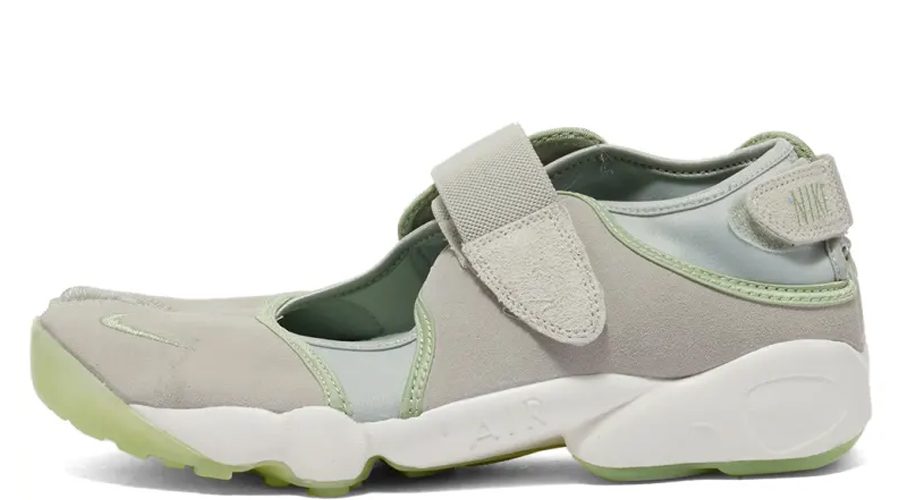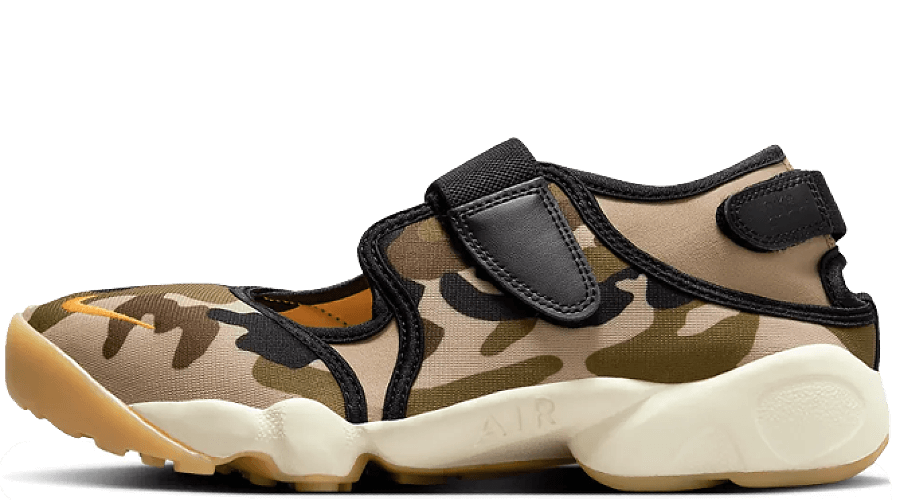Air Rift
The Nike Air Rift, despite being an unconventional and distinctive sneaker, has garnered a dedicated following over its 25-year history. With its split-toed design and sandal-like structure, the Nike Air Rift continues to draw attention and admiration. The shoe’s unique design elements, collaborations, and colorful variations have contributed to its enduring popularity.
Originating in 1995, the Air Rift’s name is a reference to the Great Rift Valley in Kenya, and its original colorway paid homage to the Kenyan flag. The sneaker’s design was influenced by Kip Buck, an ultra-distance runner and designer at Nike, who aimed to replicate the sensation of running barefoot. The split-toe feature, which is a defining characteristic of the Air Rift, was not entirely novel, with similar designs being traced back to traditional Japanese footwear and even contemporary designs like Martin Margiela’s tabi shoes.
The Air Rift’s split-toe design aimed to enhance runners’ freedom of movement, and its incorporation of sandal-like midfoot and heel Velcro straps created a snug and flexible fit. This innovative approach to sneaker design was part of Nike’s larger experimentation with concepts like the Sock Racer, Air Huarache, and Air Presto, which eventually led to the creation of the influential Nike Free technology.
The Air Rift found a strong following in Japan, particularly in the Harajuku fashion scene, and was embraced by Tokyo’s fashionable youth. The shoe’s appeal extended beyond its athletic origins to become a comfortable and stylish streetwear choice.
During the early 2000s, Nike’s Artist Series featured collaborations with artists, musicians, and actors, resulting in limited-edition sneakers. One notable entry was the Halle Berry x Air Rift, which was part of the third installment of the Artist Series. This collaboration showcased the sneaker’s shift towards a more casual and fashionable aesthetic.
As sneaker culture experienced a renaissance in the early 2000s, Nike introduced collectible colorways and limited editions that attracted sneaker enthusiasts and casual consumers alike. Variations of the Air Rift included strapless slip-ons and mid-cut versions made from unique materials like pony hair.
Overall, the Nike Air Rift’s history is marked by its distinctive design, cultural significance in fashion-forward scenes, and its contribution to Nike’s ongoing innovation in sneaker technology and design.
Showing all 6 results





